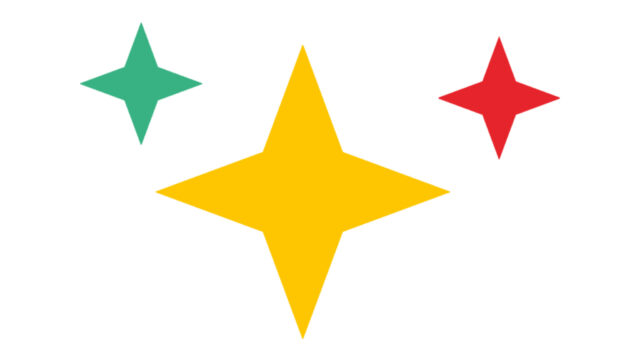Gossip Rant Chat Wa gwan Breaking Scandal Hot off the press Bulletin Dispatches Nachrichten

Let’s pretend
Generative AI, when used correctly, can be an invaluable tool for content creators, especially in the research and ideation phases. However, one of the most overlooked capabilities of Gen AI platforms is their ability to help you define and understand market personae to more effectively hone your content.
As well as general research into audience profiles, their needs, and their desires, most Gen AI platforms can simulate a specific type of content consumer, responding to questions and queries as if they were that assumed persona.
This roleplay can help refine content approaches, structure messaging to better resonate with your audience, or even consider new avenues that may not have occurred to you when drafting your piece. We wanted to put this capability to the test and see if one platform outperforms the others in terms of insight.
The experiment
We chose three of the most popular Gen AI platforms (Gemini, Chat GPT, and Claude) and tasked them with putting themselves into the shoes of three distinct customer types, before asking them to:
“Pretend you are [demographic]. What are the top three most attractive messages to you in a blog?”
NB – each of the platforms offered additional context with their responses, which we’ve excluded for space reasons.
The eco-conscious consumer
When asked, Chat GPT responded with:
– Clear, actionable sustainability tips.
– Transparency and ethical insight.
– Empowerment through community and impact.
And Gemini had this to offer:
– Tangible impact and transparency.
– Empowerment and practical solutions.
– Holistic well-being and connection to nature.
And Claude provided:
– Practical sustainability solutions that fit into everyday life.
– Transparency about environmental impact and ethical practices.
– Connection between personal choices and broader environmental impact.
The tech-savvy, first adopter consumer
Chat GPT suggested that tech-savvy consumers want:
– Cutting-edge innovation and early access.
– Deep dives into features and performance.
– Tech with a purpose.
While Gemini stated:
– Cutting-edge innovation and future potential.
– Early access and exclusive insights.
– Performance, customization, and seamless integration.
And Claude had this to say:
– Exclusive early access and insider previews.
– Deep technical analysis beyond marketing hype.
– Future-focused implications and ecosystem integration.
A luxury-seeking consumer
For a luxury consumer, Chat GPT offered:
– Exclusivity and prestige.
– Uncompromising quality and craftsmanship.
– Elevated lifestyle and experience.
While Gemini proposed:
– Exclusivity, craftsmanship, and heritage.
– Unparalleled quality and enduring value.
– Personalised experiences and elevated lifestyle.
And Claude thought:
– Exclusive access and insider experiences.
– Craftsmanship stories and heritage details.
– Discerning curation and sophisticated context.

Analysis
Overall, it was gratifying to learn that the three sets of answers resulted in broadly similar responses (admittedly to very broad, surface-level questions). This indicates that content creators can rely on all these platforms to an extent. However, each of the platforms responded with slightly different suggestions, adding an intriguing element to their approaches:
Chat GPT: favoured shorter, punchier titles, with more general responses, choosing to expand on ideas in the sub-responses (which were omitted as discussed). It also tended to link most of its answers to wider positions (community, purpose, experiences) rather than concrete responses.
Gemini: very similar to Chat GPT with punchy titles and longer explanatory follow-ups. Where Gemini differed was a focus on the personal, individual experiences, for example, “connection to nature”, rather than Chat GPT’s community considerations.
Claude: offered longer, more specific and potentially more considered responses to the question, with equally detailed follow-up content. It seemed to assume that support was also required to write an accompanying article and so crafted its responses like a blog article skeleton, rather than as direct responses.
So, what does all this mean?
This little experiment barely scratched the surface of Gen AI’s potential for content creators to contextualise and explore target audiences and demographics. The question posed was top-level and simplistic and could be tailored to specifically answer the topic being discussed. Another feature that can be used is query depth, i.e., asking the platform to follow up and expand on its answers to explore a more nuanced approach.
Continued refinement and use of these programs and platforms—allowing them to learn from you—can deliver far more refined results, so further questioning and probing is key to success. Another angle to explore is a negative one. Asking the platforms about “turn-offs” for these audiences could not only show you what to avoid, but open unexpected avenues to develop further within your content.

One thing is clear though, none of the answers provided are intended to be copy-ready. Anything produced by these platforms should be ruthlessly interrogated and restated in your own words, your own tone of voice, and to align with your objectives. Audiences are becoming smarter at recognizing AI-generated text, so a wholesale “lift-and-shift” could make the machine-produced portions of your content painfully obvious. Content should be AI-assisted, not AI-generated.
Even this initial surface exploration demonstrates the power of Gen AI as a tool to support and enable content creators and marketers, rather than (as many fear) to replace them. Another important caveat to consider with all of these platforms—as with all machine-learning-driven processes—is the accuracy and veracity of these responses. Clever content creators need to “trust but verify”. Gen AI is just one tool in creatives’ arsenal and should never be relied on as a single source of truth.
LET'S TALK
If you want to see where we can take your business, or anything else—why not drop us a line at info@thefoldcreative.com.